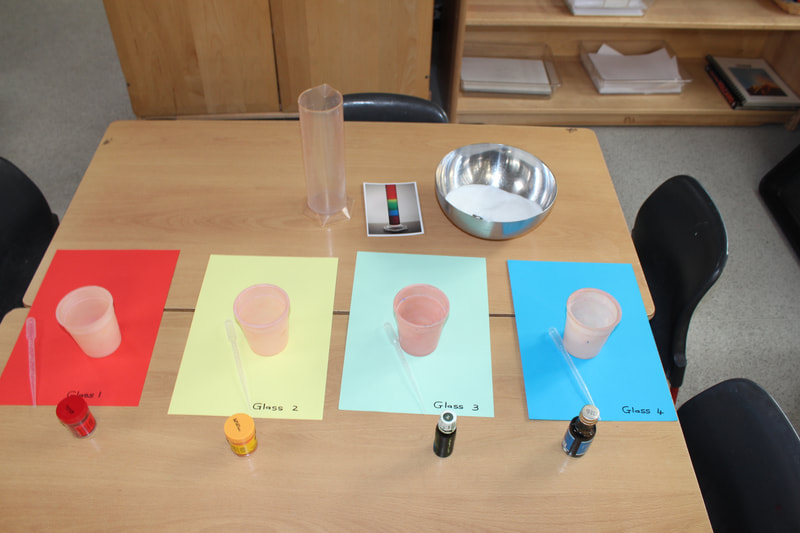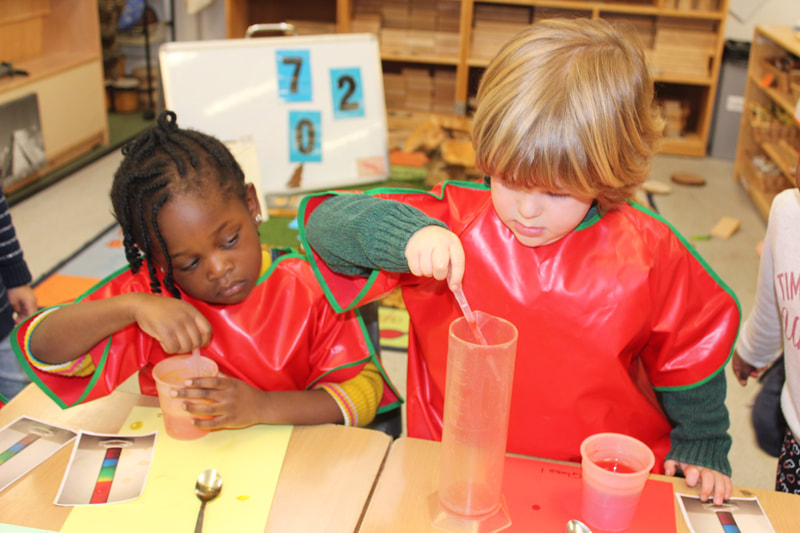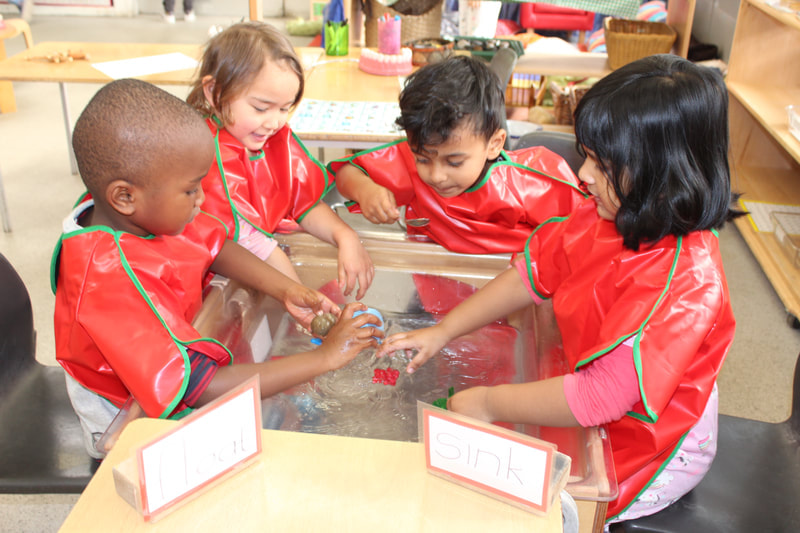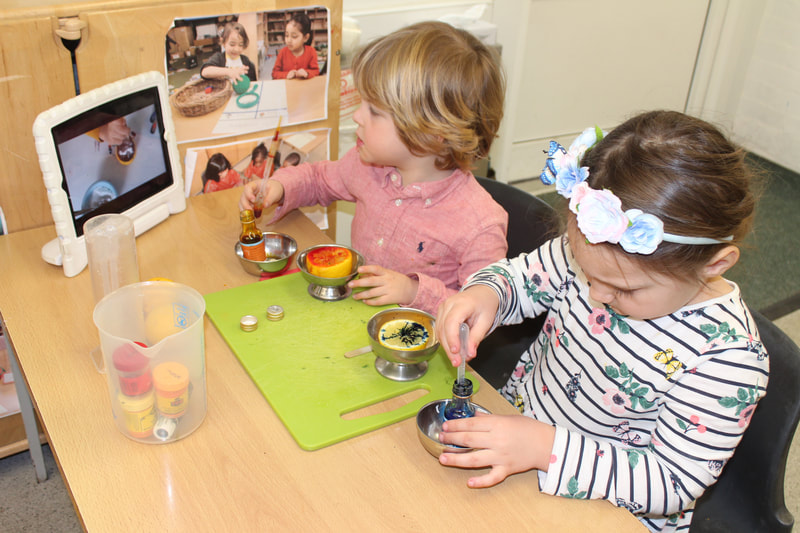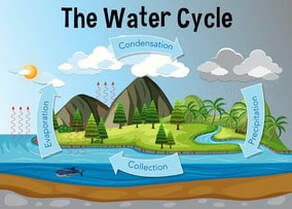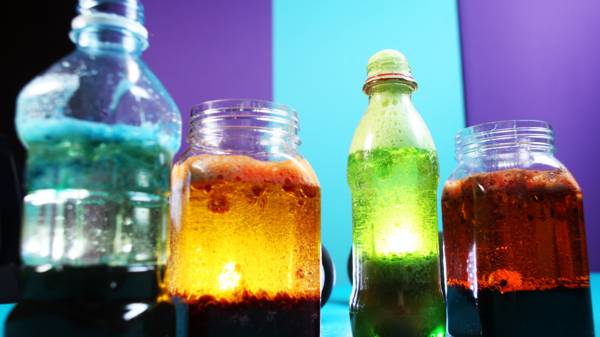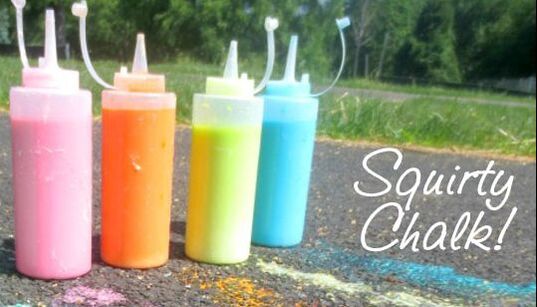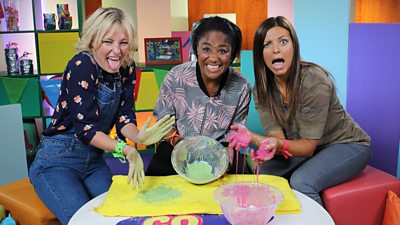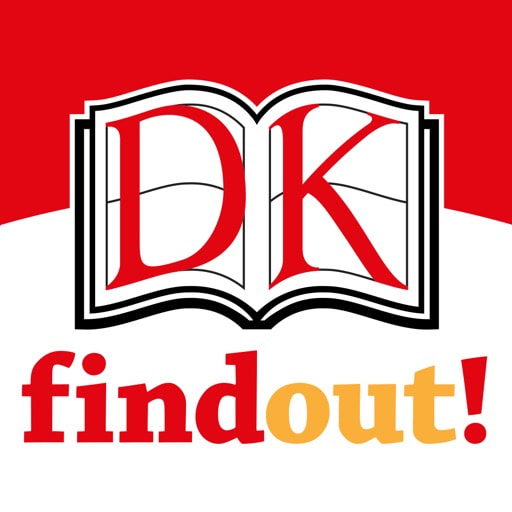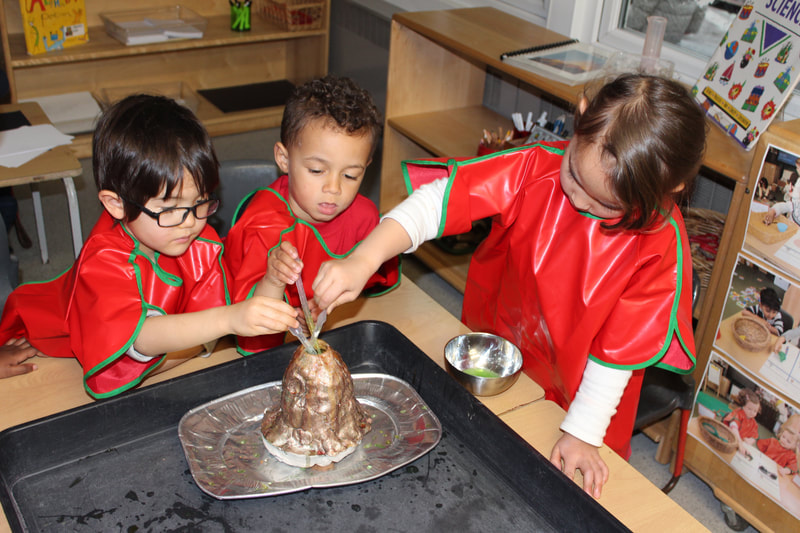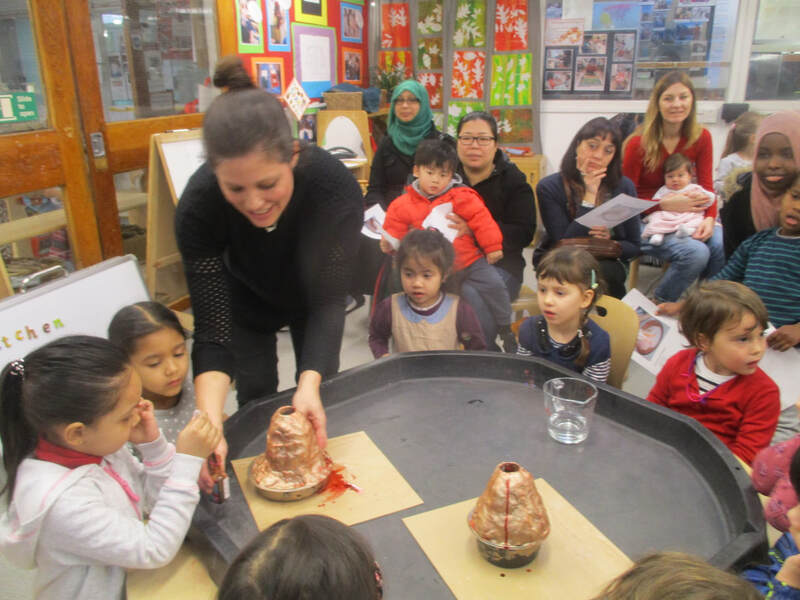Science
Science Experiments
|
Trying out simple science experiments at home is a brilliant way to engage young children. It nurtures their natural sense of curiosity, while also allowing them to express their creativity and learn about the world around them.
Fizzy Lava Lamp
Instructions
Squirty Chalk
Instructions
|
Robo-Slime
Have super sparkly fun by making gloopy robo-slime!
Instructions
Ice Cool Skaters
Instructions
|
|
How to make a volcano
Volcanic eruptions are one of the most powerful natural forces on our planet. Making your own miniature erupting volcano is a great, safe way to start learning about these incredible geological features. For the volcano model:
|
The volcano model:
1. Place your bottle upside down in the centre of a sheet of card and draw a small circle around the neck. 2. Cut a straight line through the card to the middle of the circle, and cut it out. 3. Overlap the two sides of the card to make a cone shape. Tape this into place, leaving a hole where you cut out the circle. Cut around the base of the cone so that it sits flat, but make sure that it is still taller than your bottle. 4. Place the cone over the bottle. Tape the top of the paper cone to the neck of the bottle to hold it in place. Tape the base of the cone to the other sheet of card. 5. Use paint to decorate the cone and make it look like a volcano. Allow your model to fully dry. The eruption: 1. In a bowl, combine the bicarbonate of soda and washing up liquid. Add the water and mix thoroughly. Pour this mixture into your volcano. 2. In a cup, mix together the vinegar and food colouring. 3. When you're ready, pour the vinegar into the bottle with the bicarbonate. Wait for it to erupt and watch how the lava flows. 4. Experiment with different amounts of bicarbonate and vinegar and see how the volcano's eruption changes. |
